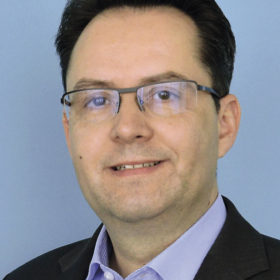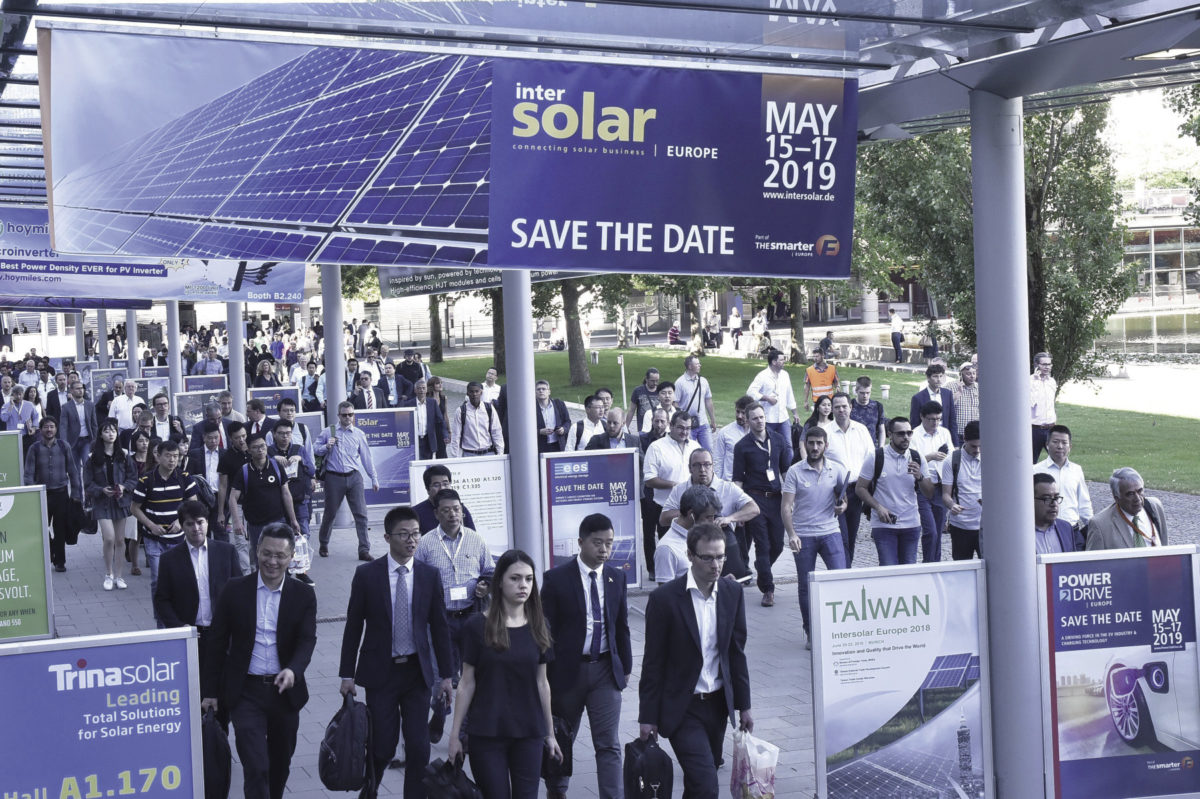The risks posed by the energy transition to the stability of electricity networks appear to have been misrepresented. In its annual energy paper released last month, J.P. Morgan’s chairman of market and investment strategy Michael Cembalest delivered his take on the progress of Germany’s Energiewende, or energy transition.
While Cembalest’s conclusions were pessimistic about Germany’s ability to decarbonize in line with the goals set out by its politicians, he noted that electricity network stability has increased as penetrations of solar PV and wind generation continue to creep higher.
“German power outages are actually down since 2006, and Germany’s 15 minute average annual outage figure for 2017 was practically the lowest in Europe by a wide margin,” writes Cembalest in the report, titled Achievements and Distractions on the Road to Decarbonization. It is an observation that aligns with that of other, more optimistic, observers of the energy transformation currently underway. “The way I see it, until you get to 30% of solar there is no problem whatsoever [in terms of system stability and balancing] in every situation. We can continue happily placing solar panels and no one is the wiser,” says Auke Hoekstra, a senior advisor to the Eindhoven University of Technology and the founder of Zenmo simulations. Hoekstra is currently leading the Spark City research program, which is utilizing a multi-disciplinary, agent-based simulation model of the energy transition.
“Once you get to 30-40% of solar, and combined with wind, 70-80% penetration, you really have to manage all of the fluctuations, particularly seasonally, basically through storage or very large area networks,” says Hoekstra. “You need some form of longer term storage. That is where hydrogen comes in. I am seeing a bright future for the people who make hydrogen.”
Hydrogen can also be converted to methane (pp. 66 – 68), albeit at lower efficiencies. But it also increases applications, potentially for the heating and industrial sectors.
Whole system approach
In his 2019 annual paper, J.P. Morgan’s Cembalest continues that while a pathway for decarbonization of the electricity system, with reliability remaining robust, is becoming clearer in Germany, he notes that much work has to be done to reduce greenhouse gas emissions from the country’s transportation, industrial and agricultural sectors – challenges on which significant progress is being made.
“Electro mobility so far is super flexible,” says Auke Hoekstra. “Right now, cars stand still for 23 hours a day. People often say that charging of EVs at work is not a big deal, but with work charging and solar, people can charge at their workplace and can absorb a lot of the solar surpluses.” Hoekstra is also optimistic about the potential for vehicle-to-grid applications, enabled by larger and more robust car batteries. “The number of battery cycles is really increasing, we expect in the future that car manufacturers will be much less worried about V2G,” he adds. Hoekstra can envisage EVs meeting morning peak demand, and then re-charging during the hours of peak solar production, leaving a full battery for the journey home and to supply evening demand peaks. “It looks like V2G will have a much brighter future than we originally thought.”
In all of this, the consumer – or increasingly, prosumer – should not be forgotten. “The decentralization [of the energy system] is driven by the need to be cleaner and renewable, and the will of the general public to want to be more independent and to own their energy,” argues Sam Wilkinson, associate director, solar and energy storage at IHS Markit. “But then that system can only work in an efficient way if we add on this digitalization part, which is all about communication, control and the intelligence.” These digital components to which Wilkinson refers include a wide gamut of emerging concepts and applications (illustrated left), including microgrids, virtual power plants (pp. 73-75) and may involve the deployment technologies such as blockchain for energy trading.
Digitization of energy is providing opportunities for many new companies and business units within existing players. Utilities, whose unrivaled position in the power system of the past is being challenged by the process of decentralization, are finding opportunities as they have the scale and customer relationships needed to prosper (pp. 76 – 78).
“These are these futuristic concepts are just as much about business model as they are about technological innovation,” says Wilkinson.
Underpinning the rapid trend towards decentralization is solar’s ever-increasing competitiveness. With each year, its appeal to both generation asset owners, households and commercial power procurers alike increases (pp. 70-72). And encouragingly, PV ticks both public acceptance and economic boxes.
“Solar will be the overall winner in terms of how cheap it will be per kilowatt hour,” says Hoekstra.
It is pleasing to see The smarter E Europe straddle more sectors and place itself at the center of th+is fast moving transition. It is forging new partnerships, including with the gas sector (p. 69) and increasingly becoming an embodiment of the changes that are not only required on a systemic level, but which are also being demanded by citizens.
The smarter E Europe: Beyond a niche

Image: Solar Promotion GmbH
In 2018, Europe’s largest solar trade fair Intersolar Europe kicked off as part of The smarter E Europe platform. This year’s event, which takes place in mid-May, will also bring something new says the organizer, Solar Promotion CEO Markus Elsässer.
Intersolar Europe is now part of The smarter E Europe and it launched last year with a whole new concept. You could sum up the concept as moving, “out of the niche of renewables.” Was it successful?
Yes, absolutely. Last year, we expanded the event even further with two new trade fairs. They took place in the smarter E Europe platform alongside Intersolar Europe, which we have been organizing for the past 27 years, and the battery and energy storage trade fair, ees Europe, which we launched in 2014. This year will be the same. We have seen clear growth of around 20% in exhibition space and expect some 1,300 exhibitors. We are also highly confident that we will once again be able to welcome around 50,000 industry visitors from 160 countries. That makes The smarter E Europe the largest energy industry platform in Europe. This shows that the concept is working and has gained market acceptance.
Part of the new concept is to attract visitors from new target groups. Are they showing up, is the trend gathering momentum?
Last year we already saw that we were able to attract a number of new visitor target groups – from the international energy industry, for instance, along with commercial and industrial companies looking to switch to renewable energy suppliers and manufacture carbon-neutral products.
What groups of visitors do you still have to work on?
In the field of electromobility, for example, there are target groups that we haven’t yet adequately addressed. Electromobility was a secondary issue within Intersolar Europe in previous years and was addressed mainly as part of special displays. With Power2Drive Europe, we now have a dedicated exhibition hall for charging infrastructure, smart charging and electromobility, where visitors can experience new developments up close and personal. This lets us address target groups outside the energy industry that we haven’t yet reached with the classic Intersolar and ees energy events, groups like the housing industry, facility managers, fleet managers or suppliers and developers within the automotive industry itself.
What about the utilities?
We’ve seen the proportion of visitors from the international energy industry skyrocket since we started focusing on markets, technologies and new developments in the energy industry across all sectors at The smarter E Europe. The platform will showcase pressing issues like the overall renewables system with decentralization, digitalization, virtual power plants, networks, microgrids, energy management, storage, and electrification of the transport sector.
You also initiated the Energiewende Award (Energy Transition Award) with the release of a study. According to the study, only one fifth of energy suppliers offered PV. Will the others follow suit and turn out for The smarter E Europe?
There’s no way around it. As an energy supplier, if I want to continue to be successful in the energy business in the future, the only way to do so is to switch to renewables and convert generation capacities accordingly. Innovative energy suppliers help consumers who want to organize their own energy supply and offer the corresponding solutions. Others also act as energy brokers, offering platforms that bring distributed producers together with consumers.
In the field of array installation, do energy suppliers compete with established installers?
Not necessarily. But there are a number of energy suppliers who have good working relationships with installers and who place orders and customers with them.
So, Intersolar offers a fruitful gathering place for installers to link up with utility companies?
Absolutely, yes.
What else is new this year?
One of the things we are planning to do is expand the power-to-gas segment. Up to now, ees Europe has been 90% about battery storage – so, short-term power storage. Here, we want to significantly expand our offering in the future. The higher the proportion of renewable energy in the power grid, the more important long-term and seasonal storage technologies like power-to-gas become. This year, we concluded a strategic partnership on power-to-gas with the two major associations in Europe. One is Eurogas, an association representing gas infrastructure companies, gas storage facilities and the gas pipeline network; the other is Hydrogen Europe, whose members include electrolysis suppliers and players in the energy and transport sectors. We want to present the issue with both of them and their member companies. There will also be a separate conference.
And what about the solar sector?
We are finally seeing significant growth in solar again in Europe and increasingly also the construction of subsidy-free power plants. This started in Spain and news of the first German plants is coming in. The more this becomes known, the more it will motivate players in the energy industry, along with industrial and commercial enterprises, to shift their power supplies to renewables.
As you mention, you work closely with the associations on power-to-gas. Is it the same with associations in all of the other areas as well?
For each trade fair, we deal with the key issues that drive the market today and in the future. This also means supporting the relevant trade associations in pulling down market barriers and advancing the markets as a whole. Since we started 30 years ago, we have been working to promote renewables in the market. It is becoming increasingly important to break down hurdles and accelerate the expansion of renewables, especially in light of climate change. Part of this is taking a cross-sector, digital and decentralized view of the energy industry and intelligently linking the areas of power, heat and mobility based on renewable sources of energy. We recently published a manifesto with renewable energy associations, for instance, which involved the solar, wind and electromobility associations. We want to illustrate the fact that we have to electrify the transport sector with renewable energy and that the renewable associations and the transport sector have to work hand in hand.
This content is protected by copyright and may not be reused. If you want to cooperate with us and would like to reuse some of our content, please contact: editors@pv-magazine.com.

